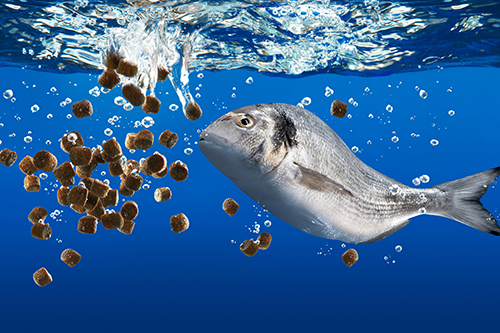A bacteria from soil is found to be beneficial for rainbow trout

A group of scientists from the Don State Technical University, Russia, has developed a probiotic feed additive based on the Bacillus amyloliquefaciens B-1895 strain for rainbow trout. The results of the first field trials are encouraging.
The trials involved 4-month species of rainbow trout Oncorhynchus mykiss, the scientists revealed.
At the end of the testing phase, the group that received the probiotic had higher final weight and absolute and average daily gain compared with the control group.
In general, the introduction of probiotics in the feed did not adversely affect the functional status of the fish,”
Intense growth rates

Moreover, the probiotic-fed trout had more intense growth rates than the control group, higher by 15.7% on average. This significant increase in growth rates indicates the potential of the probiotic to enhance the growth and development of rainbow trout. The group that received probiotics also observed a 25% decrease in feed consumption. The scientists assume that such a noticeable change indicates more efficient digestion and conversion of feed.
“In general, the introduction of probiotics in the feed did not adversely affect the functional status of the fish,” the scientists claimed. “In young trout of the control group, when assessing the general chemical composition of the organism in the muscle tissue revealed significantly higher level of moisture content by 5.1% and lower by 11.0% dry matter content.”
Protein & fat content
In muscle, experimental fish had a higher protein content by 1.33% and fat content by 2.1%. Generally, Lactobacilli, Enterococcus, Vibrio, Bacillus, and coliform bacteria were found in the intestinal samples of rainbow trout. A significant reliable difference in the content of Bacillus bacteria was noted between the samples of experimental and control groups, which was the natural consequence of using the relevant feed additive.
“The data indicate that probiotic bacteria B. amyloliquefaciens B-1895 also has no adverse effect on selected microorganisms in the study fish,” the scientists claimed.
“The biological and physiological data obtained during the studies allow us to recommend the introduction of a probiotic addition in the amount of 0.15% of the feed weight into the composition of commercial feed for rainbow trout,” noted Anzhelika Bren, one of the leading authors of the study.
According to her, soybeans were used as a substrate to obtain the probiotic additive for fish feed, as well as the solid-phase fermentation method.
Not only trout – also poultry
Previous studies by Don State University scientists have shown that the probiotic strain Bacillus amyloliquefaciens B-1895, isolated from soil, positively affects poultry.
During similar field trials, it demonstrated the potential to increase broiler weight, egg production, and egg quality. The scientists plan to run several new trials with other fish species.











